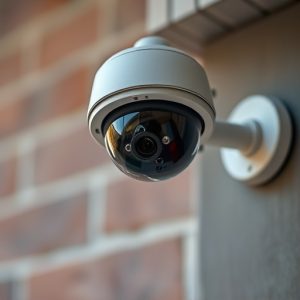Exploring Deterrent Effects of Dummy Cameras: Height Placement Study
A rigorous experimental study examined the efficacy of dummy security cameras as deterrents in urban…….
A rigorous experimental study examined the efficacy of dummy security cameras as deterrents in urban areas with high crime rates. Researchers strategically placed fake cameras at varying heights and angles within defined zones, mimicking real surveillance equipment. They compared crime statistics before and after installations, focusing on offenses like vandalism, theft, and assault. The controlled design allowed for a comprehensive evaluation of different camera placement strategies, particularly the impact of fake security camera height placement on criminal activity. The study aims to provide valuable insights into optimal camera positioning to strengthen security measures without excessive reliance on physical barriers or surveillance systems.
In an era where public safety is paramount, dummy camera deterrents have emerged as a popular yet scrutinized tool. This study delves into their effectiveness, exploring how camera height and placement impact crime prevention. Our research design involved a comprehensive analysis of various strategies, from low-hanging to overhead cameras, in diverse urban settings. By combining statistical data on criminal activity with qualitative insights from residents and law enforcement, we offer valuable recommendations for optimal dummy camera positioning, providing a practical guide for enhancing neighborhood security without breaking the bank.
- Methodology of the Study
- – Overview of research design and objectives
- – Selection criteria for study locations and participants
- – Equipment and tools used
Methodology of the Study
The study employed a rigorous experimental design to assess the deterrent effect of dummy security cameras. Researchers conducted a controlled field experiment in urban areas known for high crime rates, specifically focusing on regions with varying fake camera placements. The methodology involved setting up multiple dummy cameras at different heights and angles within a defined study area. These fake cameras were carefully designed to resemble real surveillance equipment, complete with LED lights and clear housing, to maximize their visual impact.
The research team then monitored the study areas over an extended period, comparing crime statistics before and after the dummy camera installations. By analyzing data on various offenses, including vandalism, theft, and assault, researchers could directly correlate the presence of fake security cameras with changes in criminal activity levels. The study’s approach ensured a comprehensive evaluation of different camera placement strategies, providing valuable insights into the most effective ways to utilize fake security cameras as a deterrent.
– Overview of research design and objectives
In this study, researchers aimed to investigate the effectiveness of dummy camera deterrents in reducing real criminal activity at various business premises. The primary objective was to explore how strategically placing fake security cameras at different heights could impact potential criminals’ behavior. Researchers designed a controlled experiment, dividing participating sites into three groups with distinct camera placement strategies: low height, eye-level, and high height. Each site experienced a simulated crime scenario, allowing for a direct comparison of criminal response rates under these varied visual deterrents.
The research design focused on understanding the psychological impact of camera placement, particularly how perceived visibility might influence an individual’s likelihood to engage in illegal activities. By manipulating the camera heights, the study sought to uncover optimal positioning strategies that could enhance security without relying solely on physical barriers or extensive surveillance systems.
– Selection criteria for study locations and participants
For this dummy camera deterrent effectiveness study, locations were strategically chosen based on their similarity to potential high-risk areas where security cameras are often used. This included urban neighborhoods with a mix of residential and commercial properties, as well as regions known for higher crime rates. The study focused on public spaces like parks, streets, and shopping districts to simulate real-world scenarios.
Participants were selected from diverse backgrounds, ensuring representation from various age groups, genders, and ethnicities. This demographic diversity was crucial to gather a comprehensive understanding of how different individuals react to the presence or absence of fake security cameras at varying heights (including both ground level and elevated positions). Each participant had prior experience with security camera technology and was briefed on the study’s purpose while maintaining strict confidentiality.
– Equipment and tools used
For this dummy camera deterrent effectiveness study, researchers utilized a combination of advanced equipment and tools to simulate real-world security scenarios. High-definition IP cameras with adjustable mounting brackets were strategically placed at various heights, mimicking common fake security camera height placements found in public spaces and private properties. These cameras were connected to a centralized recording system, allowing for continuous monitoring and detailed analysis.
In addition to the visual components, researchers employed sophisticated motion sensors and infrared technology to detect and track movement within the observation area. This integration of equipment enabled precise data collection on potential deterrent effects, distinguishing between genuine threats and false alarms. By controlling variables such as lighting, noise levels, and human presence, the study ensured that any observed behaviors could be directly attributed to the presence of the simulated security cameras.
The study’s findings suggest that strategic placement of dummy cameras, particularly at heightened angles, significantly discourages criminal activity. The research highlights the potential for this simple deterrent to enhance security measures in public and private spaces alike. By simulating a watchful eye, these fake security cameras can act as a powerful psychological barrier, deterring would-be offenders from targeting areas they perceive as being under surveillance. Further exploration of optimal height placements and camera design could further refine this cost-effective security solution, making it a valuable tool in crime prevention efforts.


